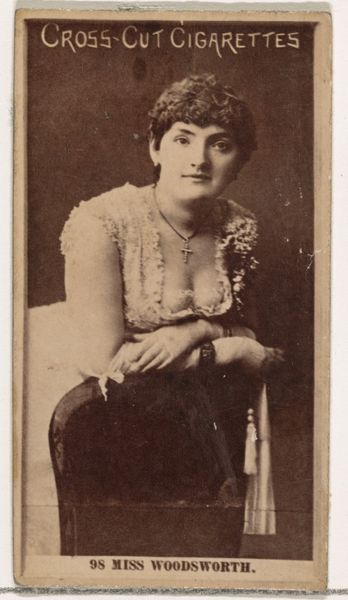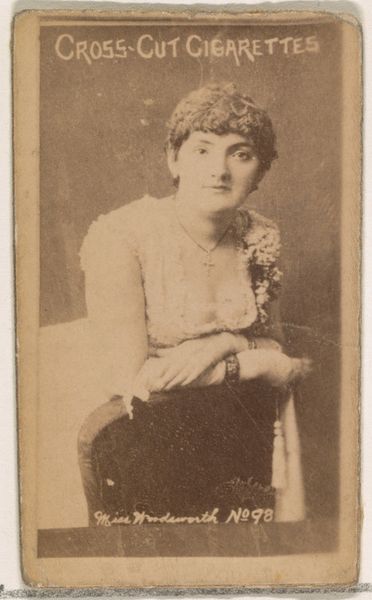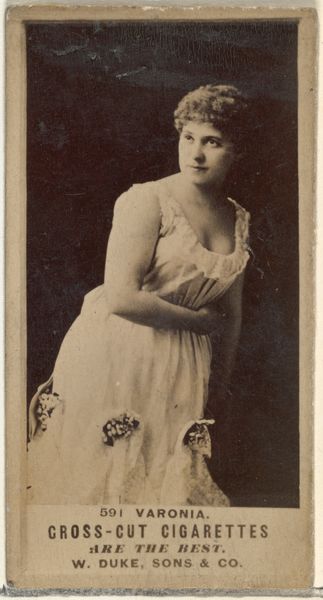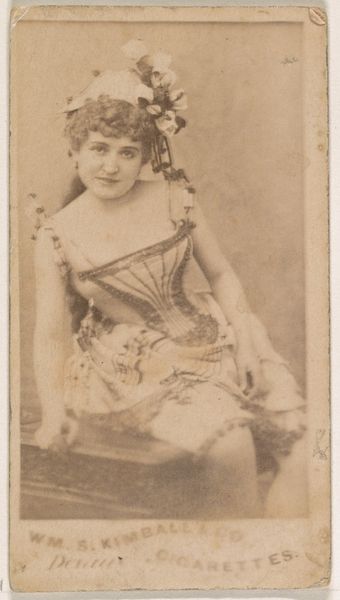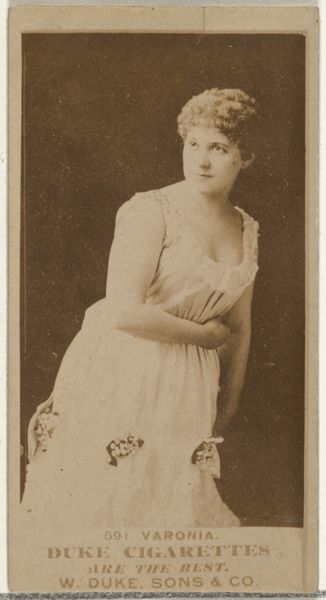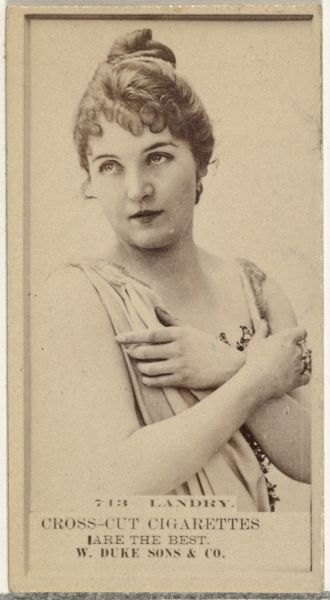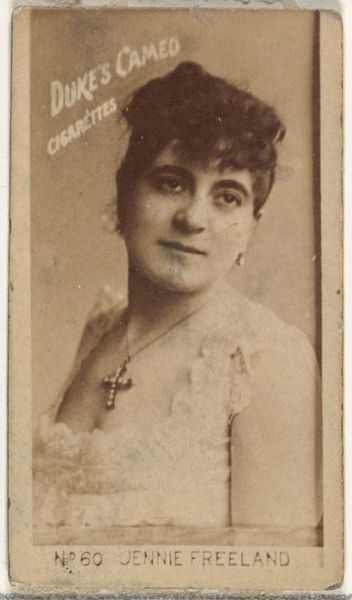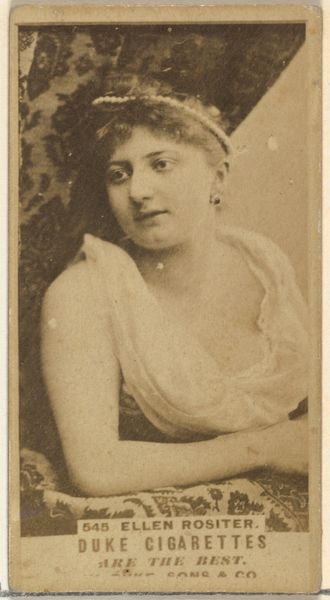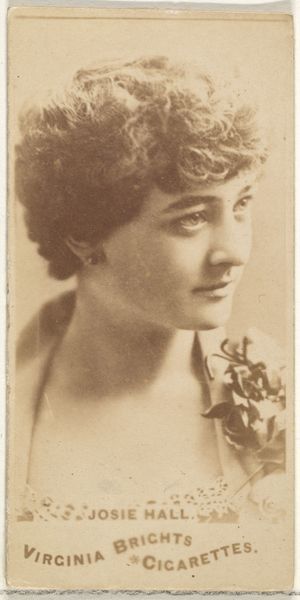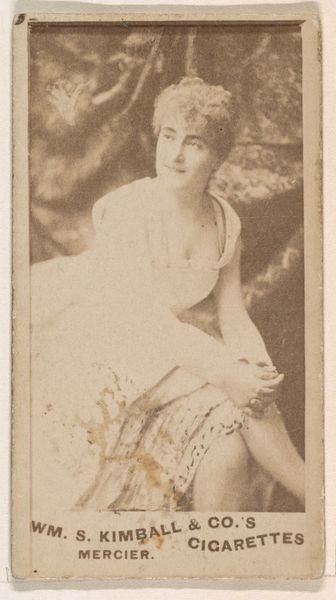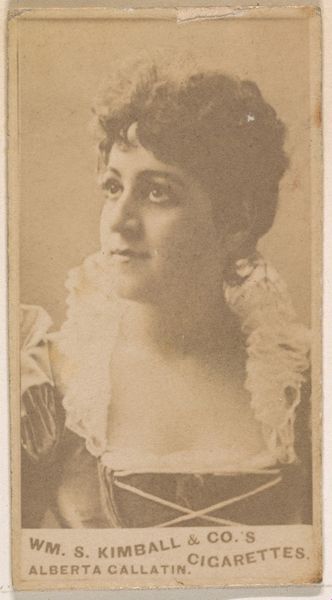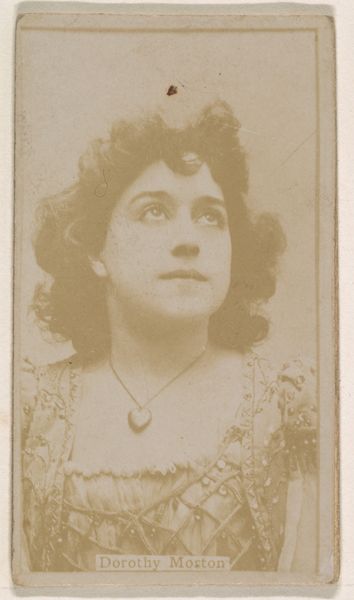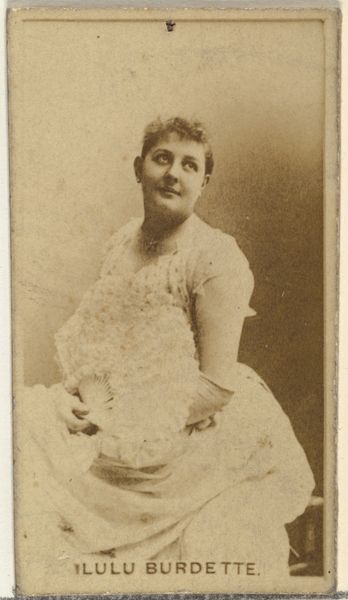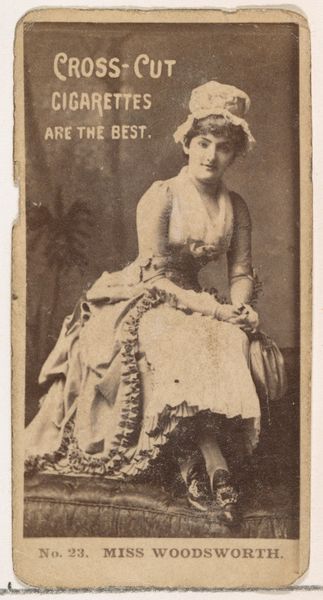
Miss Woodworth, from the Actors and Actresses series (N145-7) issued by Duke Sons & Co. to promote Duke Cigarettes 1880s
0:00
0:00
drawing, print, photography, albumen-print
#
portrait
#
drawing
# print
#
photography
#
albumen-print
Dimensions: Sheet: 2 11/16 × 1 3/8 in. (6.8 × 3.5 cm)
Copyright: Public Domain
Curator: Here we have a photograph of Miss Woodworth, created by W. Duke, Sons & Co. sometime in the 1880s. This albumen print comes from their "Actors and Actresses" series, a promotional insert for Duke Cigarettes. Editor: Oh, there's such a strange nostalgia clinging to this. It's sepia-toned reverie. She's leaning on a chair branded with "Cross-Cut Cigarettes" like she’s been patiently waiting. What's her story, you know? I instantly want to write a screenplay about her life. Curator: The fascinating element is how the image functions as a commodity. It merges the burgeoning celebrity culture of the time with the mass production and consumption of tobacco. The very support she leans on is an advertisement! It collapses high art and popular culture and blurs the lines of labor, since these would have been largely distributed by laborers and likely produced in large quantities. Editor: So the photo is mass-produced and then, presumably, recklessly thrown away. I mean, they went into cigarette packs. Yet here we are looking at her, thinking about her! The gaze she directs—right out at us. Maybe that's the haunting aspect. Like her essence is imprinted on something ephemeral. Did she ever know that her image was mass-produced like this? Curator: Precisely. And while portraits had a long history, using a photographic print such as this signals a shift. Photography democratized portraiture, even as it was being co-opted for marketing. This commercial image of Miss Woodworth suggests an entirely different kind of "original." It makes me wonder about the labor involved, what chemicals and processes went into making it? And who got paid and who didn’t? Editor: Yes! Her performance as “Miss Woodworth, cigarette promoter,” and the photo-chemical dance used to produce the final version, each leaving a mark. What can this mark-making teach us about commodification, self-perception, labor, and history? It leaves me spinning! Curator: Ultimately, it reveals much about the Gilded Age fascination with fame and the evolving methods of consumer culture. Editor: For me, the whole thing distills down to an elegant meditation on being—the intersection between being perceived, marketed, and ultimately remembered. Thank you, Miss Woodworth!
Comments
No comments
Be the first to comment and join the conversation on the ultimate creative platform.
